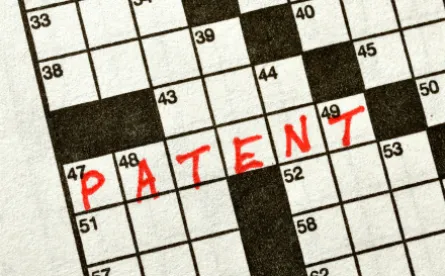In the wake of the Supreme Court’s Alice decision, 35 U.S.C. § 101 has become a popular and potent defense in patent litigation, especially in the areas of computer and internet related inventions.1 Indeed, since Alice, it has become common for patents to be invalidated by district courts as a matter of law under 35 U.S.C. § 101 early in a case, either at the pleadings stage or on early motions for summary judgment. Two recent Federal Circuit decisions, handed down within a week of each other, now signal a potential and significant shift in this trend.
In Berkheimer v. HP Inc,., the Court addressed the standards for a Section 101 invalidity defense at the summary judgment phase and reversed a finding of invalidity on summary judgment with respect to certain claims due to the existence of disputed questions of fact.2 This represents a significant shift in that prior cases have generally treated Section 101 as a purely legal question.
The Berkheimer panel began with the two-step inquiry established by the Supreme Court in Alice: (1) “’First, we determine whether the claims at issue are directed to’ a patent ineligible concept” and (2) “If so, ‘we consider the elements of each claim both individually and ‘as an ordered combination’ to determine whether the additional elements ‘transform the nature of the claim’ into a patent-eligible application.’”3 As an initial matter, the panel agreed with the district court’s determination that the claims at issue were directed to a “patent ineligible” abstract idea.
In turning to the second prong of Alice, the Berkheimer Court began by noting that “[t]he second step of the Alice test is satisfied when the claim limitations ‘involve more than performance of “well-understood, routine, [and] conventional activities previously known to the industry.‘”4 Continuing on this point, the Court held that the “question of whether a claim element or combination of elements is well-understood, routine and conventional to a skilled artisan in the relevant field is a question of fact. Any fact, such as this one, that is pertinent to the invalidity conclusion must be proven by clear and convincing evidence.”5 Drawing an analogy to issues such as indefiniteness and obviousness, the Court held that “[w]hether a claim recites patent eligible subject matter is a question of law which may contain disputes over underlying facts.”6
While occasionally hinting at the factual underpinnings of Section 101, prior cases have generally treated invalidity under 35 U.S.C. § 101 as an issue that could be decided by the district court purely as a matter of law. This opened the door to early disposition of this issue at both the pleadings and summary judgment phases of the case. Thus, the holding in Berkheimer presents a significant shift by Federal Circuit on this issue. The Court was careful to note that disposition of §101 issues on a motion for summary judgment remain possible, but only “[w]hen there is no genuine issue of material fact regarding whether the claim element or claimed combination is well-understood, routine, conventional to a skilled artisan in the relevant field.”7 As a result, a defendant challenging the validity of a patent under 35 U.S.C. § 101 at the summary judgment phase must now establish, by clear and convincing evidence, that the claim elements, alone or in combination, are “well-understood, routine and conventional to a skilled artisan in the relevant field” and that that there are no disputed questions of fact precluding judgment on this issue. This burden, while heightened, is not insurmountable. Indeed, the Berkheimer court expressly stated that “as our cases demonstrate, not every §101 determination contains genuine disputes over the underlying facts material to the §101 inquiry” and affirmed the invalidity of certain claims in dispute while remanding for a further determination by the district court on others.
Less than a week later, the Federal Circuit again addressed early disposition of Section 101 issues, this time at the pleadings phase in the context of a motion to dismiss under Fed. R. Civ. P. 12(b)(6).8 In Aatrix, the district court had found the asserted claims invalid under Section 101 at the pleadings stage without construing the claims and without admitting an amended complaint which included factual allegations directed to the alleged inventive concept in the asserted patent. The Federal Circuit vacated this decision.
The Aatrix court began by confirming that §101 defenses may be ripe for resolution on a motion on the pleadings, but cautioned that “this is true only when there are no factual allegations that, taken as true, prevent resolving the eligibility question as a matter of law” and cautioned that ‘plausible factual allegations may preclude dismissing a case under §101 where, for example, “nothing on th[e] record…refutes those allegations as a matter of law or justifies dismissal under Rule 12(b)(6).”9 The Court also confirmed that if there are claim construction disputes, the district court must resolve those disputes “to whatever extent is needed to conduct the §101 analysis.”10
As an initial matter, the Court disagreed with the district court’s determination that claim 1 was directed to an “intangible embodiment” that was outside the scope of one of the four classes of statutory subject matter (i.e., process, machine, manufacture, or composition of matter). The Court then continued its analysis, turning its attention to the allegations in the pleadings, rather than looking to the patent itself. Specifically, the Court focused on an amended complaint that the district court had rejected and noted that “the proposed second amended complaint contains allegations that, taken as true, would directly affect the district court’s patent eligibility analysis. These allegations at a minimum raise factual disputes underlying the §101 analysis…sufficient to survive an Alice/Mayo analysis at the Rule 12(b)(6) stage.”11 The Court noted that the amended complaint “presents specific allegations directed to ‘improvements and problems solved by the Aatrix patented inventions” (Slip Opinion at 9) and also included allegations that “suggest that the claimed invention is directed to an improvement in the computer technology itself and not directed to generic components performing conventional activities” which may be patent eligible.12
Echoing the views expressed in Berkheimer, the majority opinion in Aatrix states that “while the ultimate determination of eligibility under §101 is a question of law, like many legal questions, there can be subsidiary fact questions which must be resolved en route to the ultimate legal determination.”13 The Court also repeated the proposition from Berkheimer that “whether the claim elements or the claimed combination are well-understood, routine, conventional is a question of fact.”14 After reviewing the allegations of the parties, the Court held that “in light of the allegations made by Aatrix, the district court could not conclude at the Rule 12(b)(6) state that the claimed elements were well-understood, routine, or conventional” and, therefore, vacated the district court’s dismissal.15
As in Berkheimer, the majority opinion in Aatrix was written by J. Moore and joined by J. Taranto. J. Reyna, the third member of the Aatrix panel (who was not on the Berkheimerpanel), joined the majority with respect to the error made by the district court regarding the “tangible element” issue, but dissented with respect to the broader holding of the majority. In particular, J. Reyna criticized the majority opinion for its “attempt[] to shift the character of the §101 inquiry from a legal question to a predominantly factual inquiry” and for imposing broad obligations on the district court to engage in “claim construction where the meaning of a claim term is placed in controversy, even where, as here, proposed constructions are not presented to the court.”16 J. Reyna warns that “one effect of this approach is that a plaintiff facing a 12(b)(6) motion may simply amend its complaint to allege extrinsic facts that, once alleged, much be taken as true, regardless of its consistency with the intrinsic record.”17
The Aatrix decision, which looks to the plaintiff’s allegations set out in the complaint, rather than focusing on the four corners of the asserted patent, may present a substantial hurdle for defendants seeking to invalidate patent claims under §101 in the context of a 12(b)(6) motion. By including factual allegations directed to the two-prong Alice/Mayoinquiry, patent plaintiffs, applying the Aatrix framework, may have a stronger path to overcoming an early motion to dismiss on the pleadings.
Collectively, the Berkheimer and Aatrix decisions may make early disposition of patent cases on §101 invalidity, which has been a significant benefit to defendants in the post-Alice era, more difficult and, in many cases, may require resolution of this issue at trial. J. Reyna’s dissent in Aatrix, however, suggests that we probably have not heard the last word on these issues.
1. Alice Corp. Pty Ltd. v CLS Bank Int’l, 134 S. Ct. 2347 (2014).
2. Berkheimer v. HP Inc., 2017-1437, Fed. Cir., February 8, 2018.
3. Slip Opinion at 8, citing Alice and Mayo Collaborative Servs. V. Prometheus Labs., Inc., 566 U.S. 66, 78-79 (2012).
4. Id. at 12 (citations omitted).
5. Id. at 12, citing Microsoft Corp. v. i4i Ltd. P’ship, 564 U.S. 91, 95 (2011)(emphasis added).
8. Aatrix Software, Inc. v. Green Shades Software, Inc., 2017-1452, Fed. Cir., February 14, 2018.




 />i
/>i

